
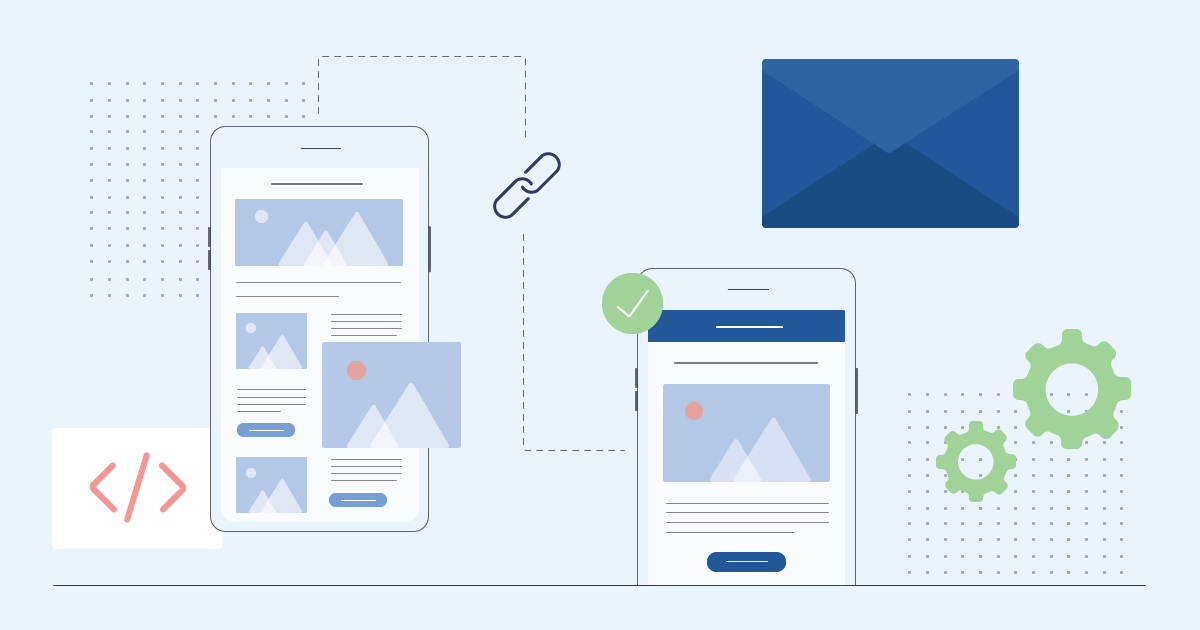
Mobile Deep Linking: Definition, Benefits & How It Can Work With Email? [2024]
The majority of modern consumers spend five to six hours on their phones daily and marketers need to take advantage of that by using mobile deep linking.
Things are drastically changing every year and it’s apparent that we do everything on our phones, whether it’s work-related stuff or just shopping, browsing, and managing our social media accounts.
Consequently, now is the time for brands that have a mobile app to leverage the tactic of mobile deep linking to offer a better user experience for their customers.
But right now, it’s probably “all Greek to you,” so, let’s start exploring what mobile deep linking is and how you can take advantage of it to improve conversions and have a smooth user experience.
What Is Mobile Deep Linking?
Mobile deep linking is the process of directing users to a specific page or location within a mobile application through the use of a uniform resource identifier (URI).
This practice allows mobile app developers as well as marketers to send users directly to app-relevant content (e.g a page or file within the app) instead of the app’s home screen.
Just like a URL is an address for a website, a URI is an address for an app on a mobile device.
Think of it this way. If you wanted to sell a product, you would want to send users to a sales page deep in your website rather than have them land on your homepage.
That’s exactly what mobile deep linking achieves, namely helping users reach a certain page in the app, thus allowing them to reach their goal faster and with less friction.
A visual representation of the aforementioned process looks like this:
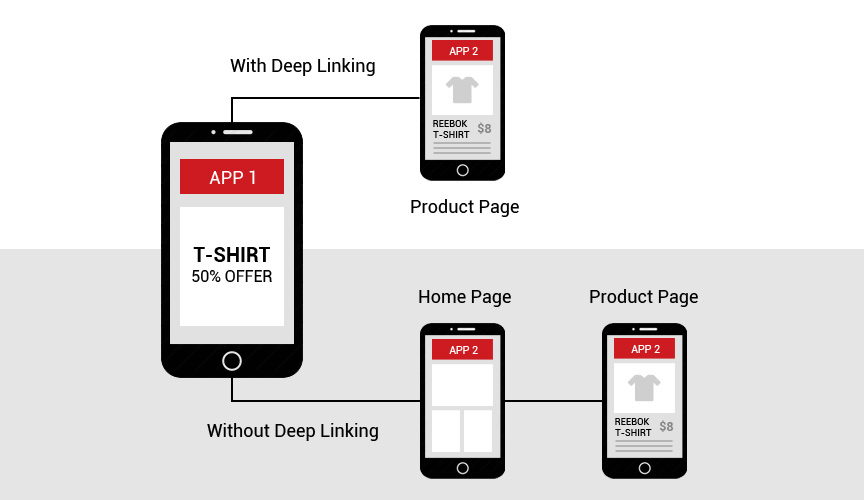
So, essentially, deep links allow mobile marketers to offer one-click access to specific resources or sections existing deep within an app.
On Android devices, deep linking is achieved via Android App Links, while on iOS deep links work via the Universal Links framework.
There are 3 different types of deep linking that you need to know about and they are the following:
Standard Deep Linking
Standard deep linking forwards users to a specific part of your application using your app URI.
This type of deep linking only works if the user has the app installed on their device. Otherwise, if the deep link is clicked and the application isn’t installed, the user will be shown an error or be redirected to a fallback page.
And that’s the major limitation of standard deep links since in most cases the app version will be more streamlined and optimized than the browser version.
Traditional deep links are useful for retargeting campaigns when the sole purpose is to find users that have the app installed and help them to return.
Let’s see what happens when you search, let’s say, for Gary Vaynerchuck’s LinkedIn profile on Google with the app installed.
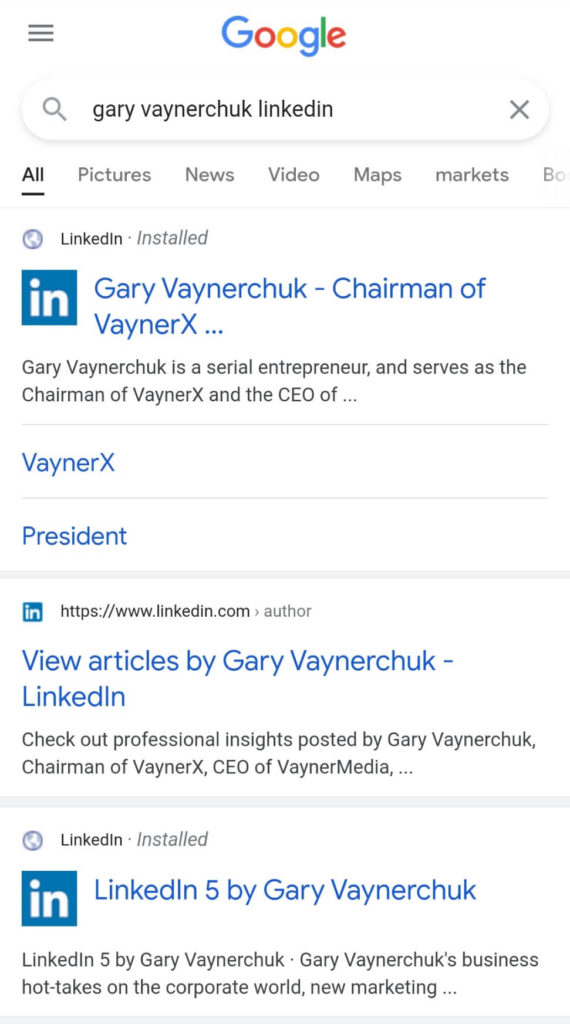
The search results would be identical even if you didn’t have the app installed. The difference is that by clicking the result, the LinkedIn app opens up seamlessly.
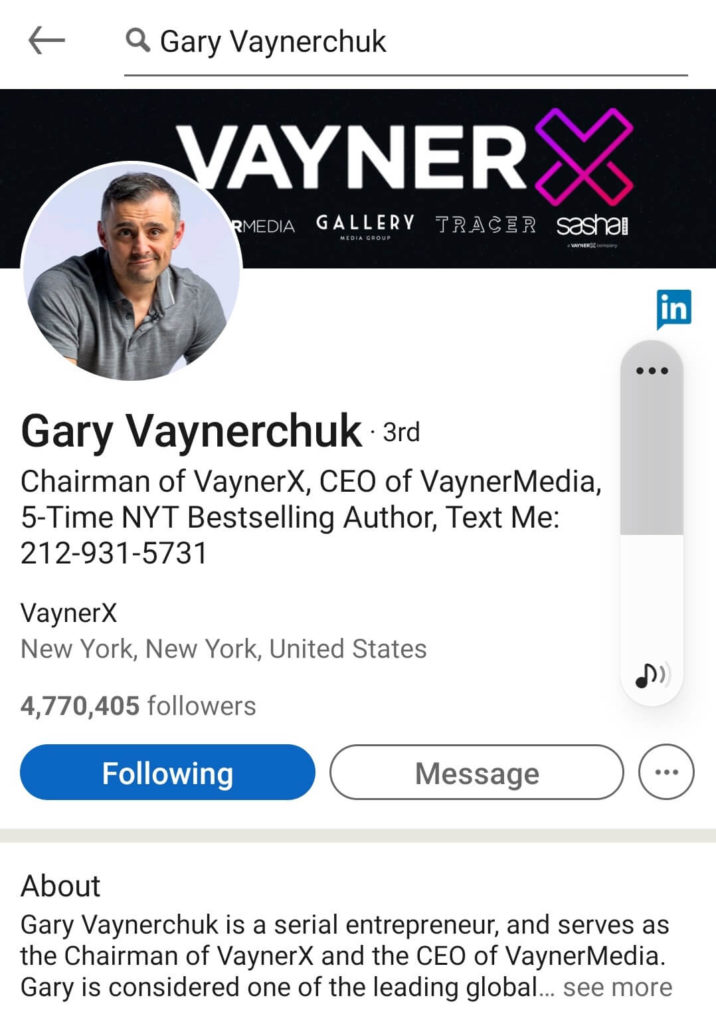
Deferred Deep Linking
Deferred deep links work the same way as standard ones with the difference that they can direct users to the download location (App Store or Play Store) if the user doesn’t have the app installed.
This helps brands and app developers acquire more customers.
As soon as the app is installed, the original page that the user was directed towards will open up.
For example, if a user clicks on an eCommerce ad for a pair of sunglasses, but doesn’t have the app installed, first they will be forwarded to the store for download. After installation is finished and the user opens the app, the product page will be shown.
So, instead of leaving new app users to try and reach the destination page all over again, deferred deep linking leads them straight to it as soon as the installation is complete.
With this method, marketers can greatly enhance the customer experience and increase the chances of actually converting them.
Contextual Deep Linking
This type of mobile deep linking is used to provide a more personalized experience tailored according to the preferences, behavior, and needs of the user.
Contextual deep links are better than deferred deep links since besides passing user data to the app during the installation phase, they also collect user information themselves. This data includes their referral source, demographics as well as their choice of promo code, so they are the ideal solution for user onboarding.
Moreover, the app onboarding process may differ depending on whether the app was installed via the Apple Store, the Google Play Store, a Facebook campaign, or another source.
However, these links cannot exist on their own. They are just standard or deferred deep links with additional parameters set by marketers themselves.
Benefits Of Mobile Deep Linking
As we saw before, deep linking can make any kind of journey between web and apps much more convenient and frictionless for users. But this is not the only reason why you should be leveraging its power for your business.
So, let’s explore the most prominent benefits of the use of mobile deep links.
1. Improve The User Experience
First of all, by implementing deep linking you make users’ lives easier and save them from passing through multiple steps instead of a single one.
Users access your content faster, with practically no navigation.
This means that there is no additional friction created in the customer journey, regardless of the stage users are at (awareness, consideration, or decision stage).
Whether you’re linking from social media, a web page, an SMS, etc, users can reach the content you intend to show them without any effort.
So, they have an “optimal” user experience and their perception of your app is improved.
Moreover, according to a recent report, mobile apps yield conversions at a 157% higher rate than the mobile web.
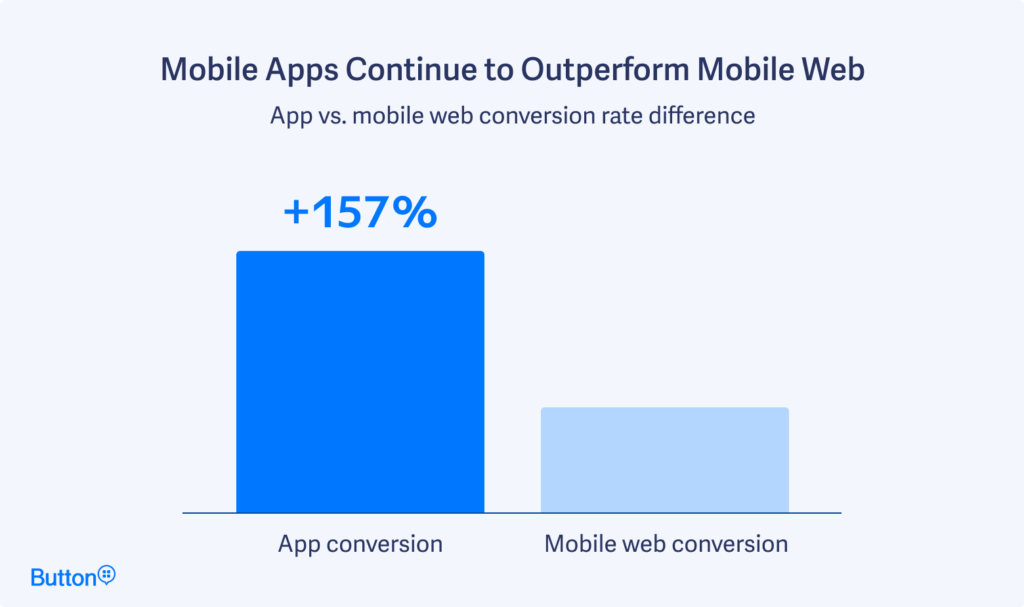
So, it is almost vital to use deep linking to ensure a seamless user experience for your customers and enjoy better conversion rates as a result.
2. Boost Customer Engagement and Retention
It’s definitely nice to see more and more people download your mobile app. But are they active all year round? The answer is no.
According to Statista, 57% of mobile app users will churn after the first month of use, meaning that more than half of the downloads end up lost.
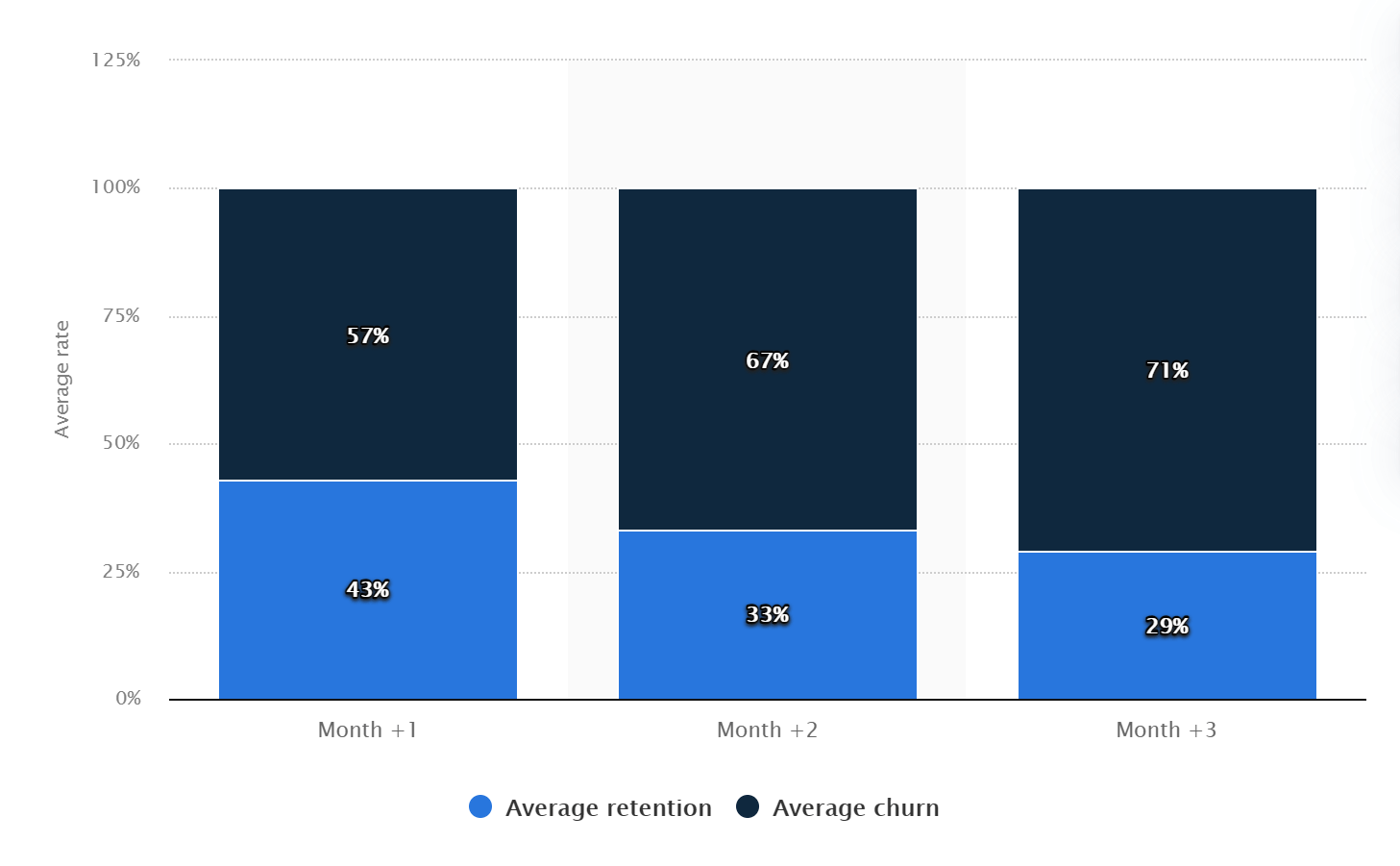
If these users visited your website but left without taking any action, you would definitely consider implementing strategies like optimizing your popups or exclusive newsletter content to capture them before they leave.
Why not do something similar for those mobile app users? Mobile deep linking is a killer tactic when it comes to retention.
Once someone has used your app, retarget them through deep linking to improve their experience and get them back.
It’s not surprising that deep-linked users visited the app twice as frequently as users who hadn’t been deep-linked. This is also because of the personalization it can offer.
Based on the already collected data you have, you can increase the chances of users engaging with your app, thus being more likely for them to make a purchase.
3. Improve New User Onboarding
Through the deep linking functionality, brands can achieve a more personalized onboarding experience for their users.
Contextual deep links can be used to onboard new users in a personalized way, based on where they downloaded the app from.
Additionally, if you identify that a lot of users regularly navigate to a specific product category after coming from a Facebook campaign, let’s say, you can direct them there automatically.
The better onboarding you offer to your new users, the more chances you have for successful conversions.
Finally, with contextual deep links, you can deliver personalized app invites or include offers in the onboarding flow.
4. Help Re-Engage Users
A lot of users will download your app, probably use it a couple of times, and then stay inactive. You can motivate these users to come back for another session by offering promotional items or exclusive access to features.
This can be done through various channels such as emails, retargeting ads, social media posts, push notifications, and other channels. However, this “promising offer” would be in vain if users ended up on the homepage of your app since they would lose interest.
Enter deferred deep linking! No matter the channel you use to re-activate those users, they will be taken straight to the in-app content you have designated.
5. Increase App Discoverability
Being discovered and getting more customers is surely one of the most important things for a business. Deep linking can help with that too.
Search engines index deep links, which means that if your app content is optimized for the right keywords, you have higher chances to rank and thus increase users that find your app through search engines.
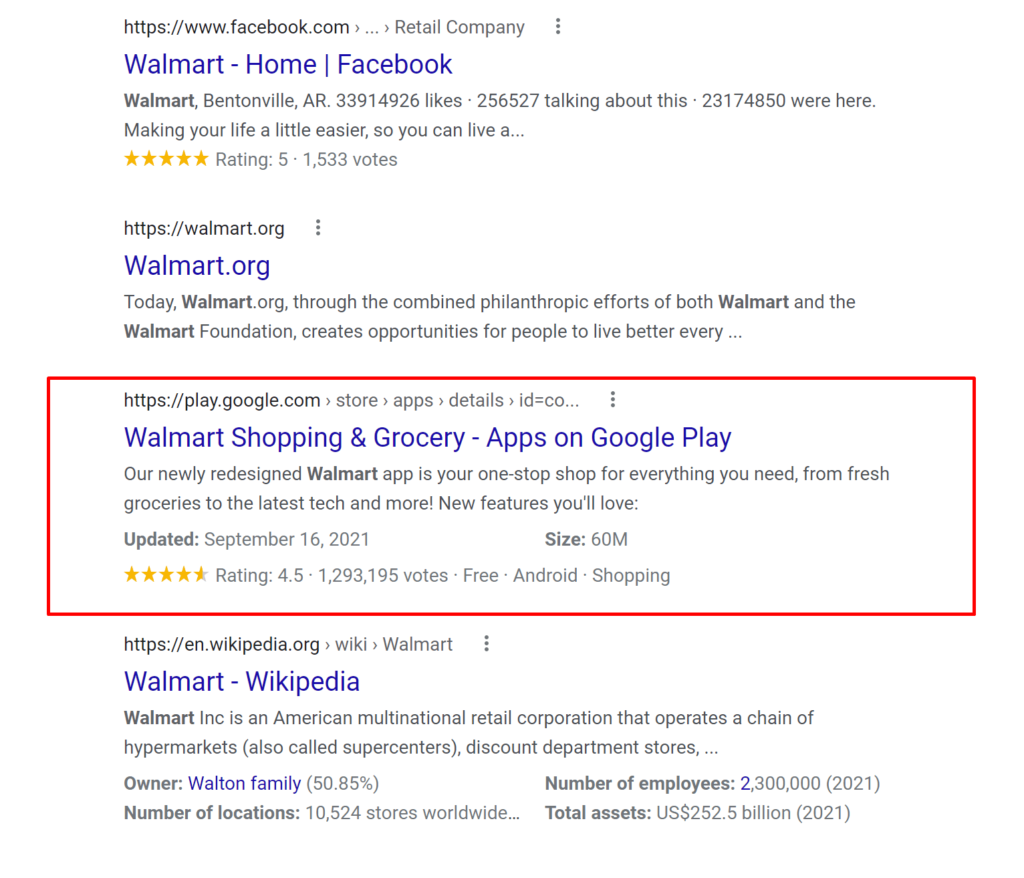
But you’re not just getting more installs! Deep linking allows you to turn search intent into conversions, as the users are seamlessly directed to the in-app content they showed interest in.
6. Optimize Your Marketing Strategy
Deep linking can greatly improve your marketing results and drive more revenue for your business.
You could collect data on what product categories users enjoy the most and then send a push campaign with a discount or coupon through a deep link. Based on the amount of data you have, the deep link could direct users to a place where they can purchase immediately from that app screen.
To put things into perspective, consumers love getting discounts and coupons on their mobile devices, while it’s been found that coupon users spend 24% more money than regular shoppers.
This is a huge opportunity for marketing teams to drive more revenue through a deep linking solution, while at the same time reducing friction in the overall customer journey due to the fewer steps required to make the actual purchase.
Can Mobile App Deep Linking and Email Marketing Work Together?
Email marketing is among the best channels to reach and engage your audience, while it also helps brands establish a meaningful relationship with their customers.
Now marketers have a unique opportunity to leverage the power of both email and mobile deep linking to create a seamless experience that their customers will love.
Mobile apps are designed with the brand’s loyal consumers in mind, meaning those who engage with it and spend more money. Through the various personalization options that email marketing offers, you can direct people back to your app, incentivize them to use it, and make purchases or even use email to get more downloads.
Moreover, via deep linking in email, you can forward users to specific parts within your app without “disrupting” the user experience.
However, there is one thing you need to remember to perfectly align the two strategies. Have a clear purpose when deep linking to your app. The location you’re taking your customers needs to have a big impact.
If the page within your app is not fully optimized or doesn’t offer a better experience than your mobile web page, then it’s probably better not to direct users there. So, keep that in mind.
Overall, mobile deep linking and email can provide a major competitive advantage for your business if utilized properly.
Consumers in 2021 expect a smooth, omnichannel experience and that’s all the more reason to try and integrate both strategies into your marketing efforts.
Conclusion
Mobile deep linking is a powerful tactic that can drive more conversions for your business, improve the overall user experience and help you create personalized onboarding experiences for new customers.
While it may be tricky to start with mobile deep linking, the benefits you’ll receive far outweigh the initial difficulties.
Being able to offer an optimal experience no matter the stage customers are in the buying journey is going to be key in 2021 and onwards.




 Published by
Published by

 Published by
Published by
